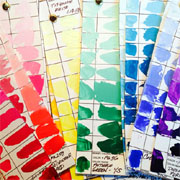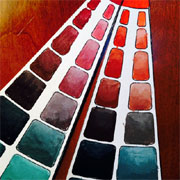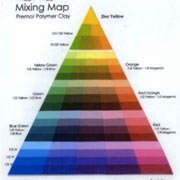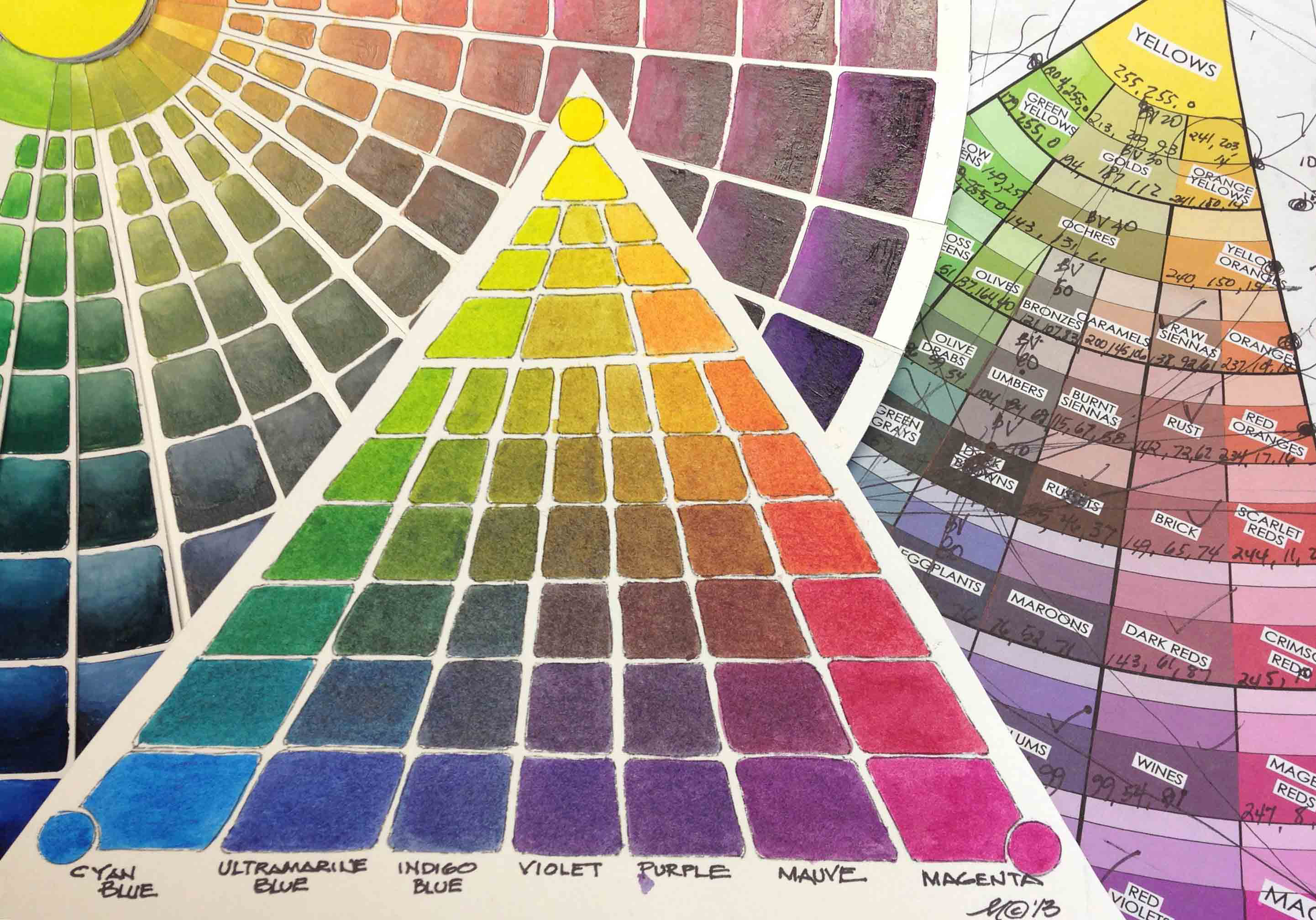
With the help of generous support from Muse Art and Design, our local independently owned art supply store, I’ve spent the last year exploring color in traditional media – acrylic, oil, watercolor and gouache paint, ink, colored pencil and pastel.
As a result, I am now offering a workshop on making color scales in all media. The first of these fun classes – Color Scales for Artists – will be Friday, November 21st with the Oregon Society of Artists. This workshop is a companion class to Rene Eisenbart’s “Color Mixing Demystified” workshop at OSA on November 14th.
Exploring the properties of colors and pigments as a separate activity from painting itself can save time and money. Making color scales can answer all sorts of color questions and can be an enjoyable and inspiring activity. Once you get a system in place, the process is quick, easy, painless and fun!
Participants will leave with a huge amount of experience under their belt, templates for making additional scales, and the beginnings of a collection of invaluable references for choosing and mixing any color they want.
If you’ve always thought about doing color studies but could never quite get started, this workshop is for you!
Materials:
Bring the paint medium of your choice (oils, acrylics, watercolors, or gouache) in a variety of colors, including at least three colors that you use frequently or that you’d like to explore. The templates and tools will be provided.
We will be exploring three types of color scales:
 Test Mixing Scales
Test Mixing Scales
Test mixing is recommended anytime you pick up new colors or materials. A few quick and loose color scales to white, water, or any clear medium can provide invaluable information about the tinting strength, opacity and bias of a new color as well as give you an immediate feel for how it handles. Bring your favorite colors to test – or new colors to try out.
 Color Chart Scales
Color Chart Scales
Mixing every color on your palette to all the other colors is a standard color mixing exercise. The best way to do this is with color scales instead of the standard grid or matrix. Not only will you be able to see more colors than just the half-to-half mix, you can continue to add to your collection every time you pick up new colors.
These color chart scales are designed to be connected into a fan deck that spreads out to show all the colors and their tints. Bring four colors to practice mixing to each other.
 Base Mixing or Limited Palette Scales
Base Mixing or Limited Palette Scales
Color scales are a simple way to map the gamut (or range) of colors possible using just three colors. The Maggio Mixing Map is a triangular chart that starts with five base colors between the blue/cyan and the red/magenta corners.
After the base colors are mixed, a series of five vertical color scales are mixed from the base colors to yellow. The result is a visually balanced chart that includes higher saturation colors on the outside of the triangle and lower saturation colors on the inside. All of the colors can also be tinted if time permits.
Note:
A $10 discount for this workshop is available to registered participants in Rene Eisenbarts “Color Demystified” Workshop at OSA on November 14. Please call Muse Art and Design at 503.231.8704 for the discount code.


Leave a Reply